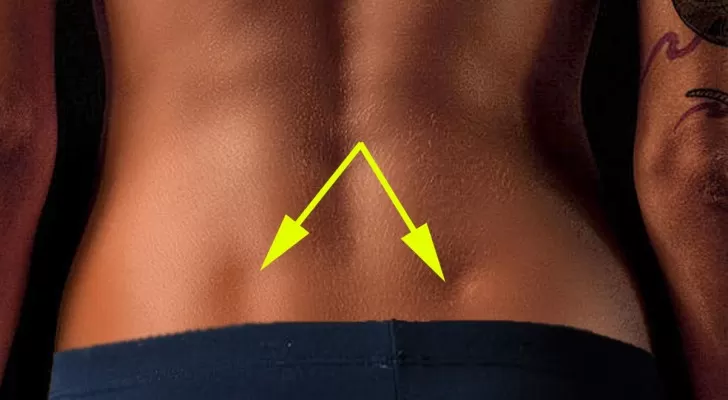The Science Behind Lower Back Dimples: Few People Know This
Known as the “dimples of Venus,” the little indentations on the lower back hold a special place in the world of physical beauty. These dimples, formally referred to as fossae lumbales laterales, are located near the top of the buttocks, right above where the spine and pelvis meet. The term “dimples of Venus” is a nod to the Roman goddess of love, beauty, and desire, Venus. This name reflects the long-held view that these indentations are physical markers of attraction.
Interestingly, the cause of these dimples is not related to muscle definition, as one might assume, but rather the anatomy of the sacroiliac joint. The sacrum, a triangular bone at the base of the spine, and the iliac spine of the pelvis are connected through this joint. Where the skin adheres to the ligaments underneath, a shallow depression forms, resulting in the dimples. These indentations are entirely genetic; people either have them or they don’t. No amount of exercise can create them. However, weight loss and certain body-sculpting activities may highlight the dimples and make them more noticeable by accentuating muscle tone.
Though these dimples are more common in women, they are occasionally found in men as well. When seen in men, these indentations are often referred to as “Apollo’s dimples,” named after the Roman god of youth and beauty. These marks, whether in men or women, are admired for their symmetry and uniqueness and have long been associated with an idealized version of physical beauty.

The appeal of the dimples of Venus is widespread, transcending gender. They enhance the natural curve of the lower back, contributing to the appearance of a sculpted, proportionate figure. For both men and women who have them, these dimples add to their allure, giving their bodies a certain elegance that many find appealing. For generations, Venus’s dimples have been considered a subtle yet distinctive addition to the human form, representing a connection to physical attraction and beauty. Their historical association with deities of love and desire further reinforces their symbolic significance in terms of beauty standards.
It’s fascinating to note that these dimples are universally admired, regardless of gender. They’re often viewed as a natural sign of beauty, enhancing the lower back’s shape and providing a refined, youthful appearance. The dimples’ connection to divine figures such as Venus and Apollo speaks to a deep cultural and historical appreciation for physical symmetry and allure.
In many cultures, these small depressions are seen as the epitome of elegance and sensuality. They frequently draw admiration or even jealousy, as people often consider them a desirable trait. Though dimples of Venus are sometimes compared to other widely admired physical features like prominent cheekbones, well-defined abs, or a strong jawline, they remain elusive. Unlike other traits that may be sculpted through exercise, the dimples are an organic part of one’s body, created by anatomy rather than muscle.

However, there is a way to make these dimples more noticeable. For those who already have them, reducing body fat through proper nutrition and exercise can help accentuate the indentations. The less body fat surrounding the area, the more defined the dimples become. This can draw attention to the lower back’s natural curvature, making the dimples stand out more clearly.
The dimples of Venus, or fossae lumbales laterales, serve as a reminder that beauty comes in many forms. Some people are born with these small but striking indentations, and they are often considered a mark of grace and sensuality. Their presence on the human body reminds us that there are various kinds of attractiveness—some of which are innate and beyond our control, yet still worthy of appreciation. These natural imperfections offer a glimpse into the diversity of human beauty and remind us to celebrate the uniqueness of the human form.






